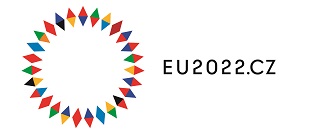EDUCATION SYSTEM
The Czech education system is based on a long tradition beginning in 1774, when compulsory school attendance was instituted. But Czech education and research have a longer history, one that dates back to the 14th century. Prague has the oldest university in central Europe: Charles University, founded in 1347. With more than 50,000 students, it is today the biggest Czech university. The current literacy rate in the country exceeds 99%.
Children start with preschool and continue on to elementary, secondary, university, and post-graduate education. The classification system used in the Czech school system to evaluate students consists of a scale from 1 (best) to 5 (worst). Report cards (summary classifications) are given for each subject halfway through and at the end of the school year.
Children may enter preschool before they begin compulsory elementary education. Preschool enrollment is guaranteed for children in their last year before entering elementary school, but they often attend as early as 4 years of age. Preschool institutions are intended to encourage early learning habits and facilitate social contact among peers, both of which are instrumental for a child’s smooth transition to elementary school. In cooperation with parents and teachers, children learn to think logically, training their memories and exercising their imaginations. Concurrently, these skills help to evaluate their intellectual and educational levels before entering elementary school.
Czech elementary education takes nine years, usually from the ages of 6 to 15. In contrast to the United States, children can obtain their elementary education at a variety of different schools that can also utilize different types of educational programs. Most commonly, children attend a regular 9-year elementary school, which is divided into two stages: a primary and lower secondary stage, where the primary stage encompasses grades 1-5 and the lower secondary stage grades 6-9.
In addition, children have the option to apply to 6- or 8-year gymnasiums either after their 5th or 7th year of elementary education. Gymnasiums are schools targeted toward a specific area of study, but still provide pupils with their basic education. Additionally, students may choose to attend a conservatory, for example an 8-year dance conservatory, and some students with disabilities will be placed in special schools to accommodate their needs. All of these different types of schools provide students with an elementary education that allows them to continue on to pursue a higher education at the secondary and university level.
Upper secondary education can be either general or vocational. It is generally four years in length (grades 10-13) and is not considered mandatory. At this level, vocational education is much more common than general secondary education. Students who graduate with a vocational certificate often do not continue in the classical education system, and instead pursue a career in their chosen area of study right away. A general secondary level of education is not attended by a great number of students, since the majority attends 8-year gymnasiums after 5th grade, which leads them all the way up to their 13th year of education.
Czech universities are making a significant contribution to global research.
Tertiary or university education includes all studies following the completion of primary and secondary education with a successful final examination. Final examinations consist of several smaller exams: a Czech language exam, several exams in the student’s area of specialization, and an exam on a topic of the student’s choice. As of 2008, these exams began to consist of two parts: a common (state) exam and a profiling (specific for individual schools) exam. This measure was implemented in an effort to provide better comparability of the final examinations across different schools. University education is available to all applicants with a completed secondary education (i.e., final exam) who successfully pass the entrance exam. The entrance exam system is designed specifically by each individual school, and serves to test the applicants’ knowledge and skills.
Most universities offer accredited Bachelor’s, Master’s, and engineering degrees. A Bachelor’s degree is usually a three-year course of study in which students receive an general survey of highly specialized areas. Students can either leave their studies after these three years or they can complete it by means of a final exam and defense of a Bachelor’s thesis. They can also choose to continue on to a Master’s program, where they can achieve a narrower specialization.
A Master’s degree can be a five- or six-year study program or, following the completion of a Bachelor’s degree, a two-year program. In obtaining a Master’s degree, students gain both a basic survey of highly specialized subjects and a certain grade of specialization. The program culminates with students taking the required state final exams and defending their thesis. Finally, an engineering degree, which pertains mainly to technical and economic fields, can also be obtained.
After students pass these types of university studies, some continue their specialization through doctoral programs. Passing this program is often conditioned upon publication of work and sometimes also upon undergoing training. In college, students can study either in attendance form (formerly daily study), distance form (formerly extramural studies), or a combination of both (combined study).
Besides the standard types of study, colleges also offer other forms of education, including retraining study, university for seniors, studies oriented toward pedagogical qualification, and others. Public universities are free, provided that students qualify through entrance exams. However, once they reach the age of 26, students will no longer be eligible for student status under state social services, nor will they receive student benefits, such as free health insurance coverage during their studies.
© 2022 Ministry of Foreign Affairs








